Exploring why the propeller spins:
I used to have a bicycle that would shake itself apart, literally. Bolts holding on things like fenders would loosen themselves mysteriously and fall off. I sort of figured it had something to do with vibration, but I didn't really intuitively get it. It wasn't until I worked out how the propeller stick works that I understood why my bike was shaking apart.
What I discovered was that both the prop stick and loosening bolts work like hula-hoops! Think about how you try to keep the hula-hoop spinning. You wiggle your body in a circular motion, right?
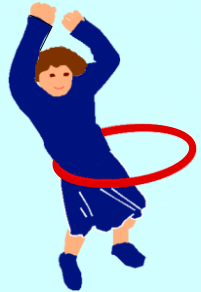
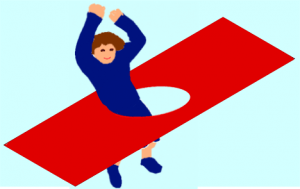
Now try to imagine that your body is the the wire of your propeller stick, and the hula-hoop is the propeller. You might want to imagine rectangular cardboard taped to the hula-hoop, so it looked more like a propeller.
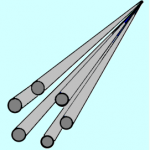 If you could use time-lapse photography to show the motion of the wire at the end of the propeller stick, I believe you would see a circular vibration such as the illustration on the right. Notice that the motion is similar to what you would do with your hips to make a hula-hoop spin.
If you could use time-lapse photography to show the motion of the wire at the end of the propeller stick, I believe you would see a circular vibration such as the illustration on the right. Notice that the motion is similar to what you would do with your hips to make a hula-hoop spin.
Let's test the idea. Using the same cereal box cardboard you used for the original propeller, make a cardboard propeller about 2" by 5". Next cut a hole in the middle about as big as a U.S. penny. I think the easiest way to cut the hole is fold the cardboard in half, then cut out a half-circle at the fold.
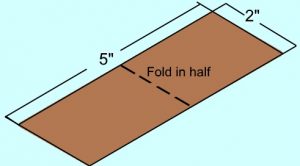
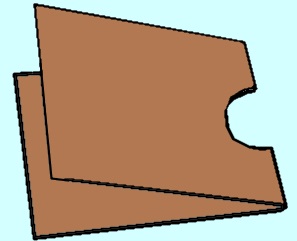
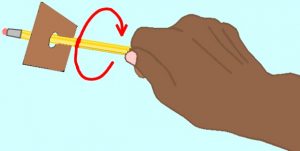
Now take a pencil, put the eraser end through the cardboard, and move your hand in a fast, circular motion. You should be able to get the big cardboard propeller to twirl. With this bigger model, it might be easier to investigate how motion is transmitted to the prop.
I now own a backhoe (which is not a toy, despite some insinuations to the contrary from my wife) with giant bolts exceeding an inch in diameter, and guess what? A couple of them have shaken loose! Industry spends hundreds of millions of dollars making fasteners that will come off when you want them to, but not shake loose. That's why "national fine" screw threads were invented, why bolts are "torqued," why there are special nuts and lock-washers. Nuts and bolts turn by themselves when subjected to circular vibrations unless they are very tight.
Correspondent Steve Nieves informed me of this excellent video about the subject where you can actually see bolts turning because of vibration.
I'd like to know how this project goes for you. I'm happy to answer questions about it. Feedback from you is an important way for me to know what works and what needs clarification.
